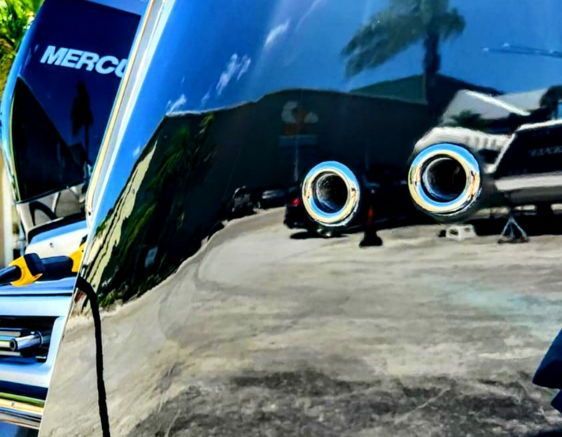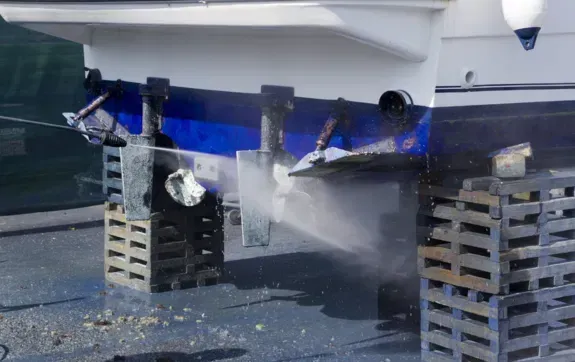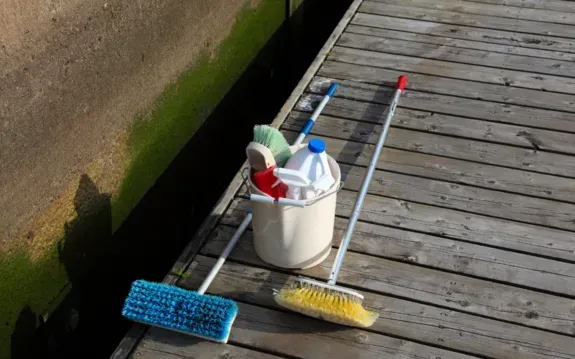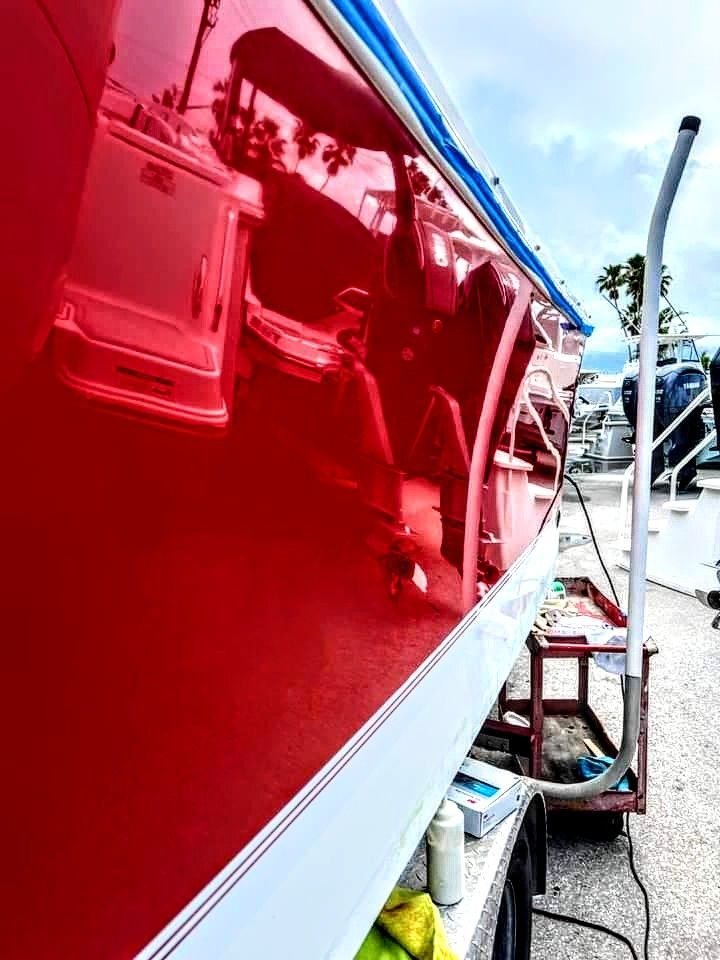Expert Tips for Removing Stubborn Stains from Marine Vinyl: Prevention, Cleaning, and Professional Detailing Services
How to Remove Stubborn Stains from Marine Vinyl: Prevention, Removal, and Aftercare
Marine vinyl is a popular choice for boat seating and upholstery due to its durability, water resistance, and aesthetic appeal. However, like any material exposed to the elements, it can accumulate stains over time. Whether it's from sunscreen, mildew, fish blood, or other marine-related sources, stubborn stains can mar the appearance of your boat. This blog will guide you through effective methods to remove these stains, how to prevent them, and tips for maintaining your marine vinyl in top condition.
Preventative Measures: Keeping Marine Vinyl Pristine
Prevention is the first line of defense against stubborn stains. By taking proactive steps, you can reduce the likelihood of staining and extend the life of your marine vinyl.
- Regular Cleaning:
Routine cleaning is crucial. Wipe down your marine vinyl with a mild soap and water solution after each use to remove any surface dirt, salt, or contaminants. This prevents buildup that can lead to staining. - Use Vinyl Protectants:
Applying a UV-resistant vinyl protectant can shield the material from sun damage, which can cause fading and make stains more difficult to remove. Choose a product specifically designed for marine use to ensure it holds up in a harsh environment. - Avoid Harsh Chemicals:
While it might be tempting to use strong cleaners, these can damage the vinyl and make it more prone to stains. Stick to products recommended for marine vinyl to avoid unnecessary wear. - Cover Your Seats:
When not in use, cover your boat seats with a breathable cover. This will protect the vinyl from UV rays, bird droppings, and other potential staining agents.
The Stain Removal Process: Getting Your Vinyl Back to Its Best
If you notice a stain on your marine vinyl, it's important to act quickly. The sooner you address the issue, the easier it will be to remove.
- Identify the Stain:
Understanding the nature of the stain can help you choose the most effective removal method. Common marine vinyl stains include mildew, sunscreen, ink, and fish blood. - Gentle Cleaning First:
Start with the least aggressive method. Use a soft cloth or sponge with warm soapy water to gently scrub the area. This can often remove lighter stains without damaging the vinyl. - Specialty Cleaners for Tough Stains:
For more stubborn stains, a marine vinyl cleaner may be necessary. Look for products that are formulated to tackle specific types of stains. For example, mildew stains may require a cleaner with mildew-fighting agents, while ink stains might need a solvent-based cleaner. - Use a Soft-Bristled Brush:
If the stain persists, a soft-bristled brush can help lift it from the surface. Be gentle to avoid scratching or damaging the vinyl. - Rinse and Dry Thoroughly:
After cleaning, rinse the area with fresh water to remove any residual cleaner, then dry it thoroughly with a clean towel. Leaving moisture on the vinyl can lead to mildew growth.
Aftercare: Keeping Your Marine Vinyl Looking New
Once you've successfully removed the stain, proper aftercare is essential to maintain the integrity and appearance of your marine vinyl.
- Reapply Protectant:
After cleaning, it's a good idea to reapply a UV protectant to the vinyl. This will help protect it from future stains and UV damage. - Regular Inspections:
Regularly inspect your vinyl for signs of wear or new stains. Addressing issues as they arise can prevent small problems from becoming big ones. - Store Properly:
If you store your boat during the off-season, ensure that the vinyl is clean and protected. Use breathable covers and store in a dry, well-ventilated area to prevent mildew. - Avoid Abrasive Materials:
When cleaning or drying your vinyl, always use soft cloths or sponges. Abrasive materials can cause micro-scratches that make the vinyl more susceptible to staining.
Maintaining the pristine look of your marine vinyl requires a combination of preventative care, effective cleaning techniques, and regular maintenance. By following these guidelines, you can keep your boat’s vinyl seats looking like new and extend their lifespan, ensuring that your time on the water is as enjoyable and worry-free as possible. Remember, the key is consistency—regular care will go a long way in keeping stubborn stains at bay.
Professional Care with Treasure Coast Boat & Yacht Detailing
While regular maintenance and care can keep your marine vinyl in good shape, sometimes it’s best to leave it to the professionals. That's where Treasure Coast Boat & Yacht Detailing comes in. We specialize in providing top-tier boat detailing and cleaning services, ensuring that every inch of your vessel, including the vinyl upholstery, looks its best.
At Treasure Coast Boat & Yacht Detailing, we offer comprehensive cleaning services tailored to meet the unique needs of boat owners. Our expert team uses specialized products and techniques designed specifically for marine environments. Whether you're dealing with stubborn stains, UV damage, or just need a thorough cleaning, we’ve got you covered.
Why Choose Us?
- Expertise: Our team is trained to handle all types of marine materials, including vinyl, ensuring that your boat’s interior and exterior are treated with the utmost care.
- Specialized Products: We use high-quality, marine-grade cleaning products that are tough on stains but gentle on your boat’s surfaces.
- Attention to Detail: We understand the importance of detail, and our meticulous approach ensures that no spot is overlooked. From stain removal to vinyl conditioning, we leave your boat looking pristine.
- Convenience: We offer flexible scheduling to accommodate your needs, ensuring that your boat is always ready for your next adventure.
Whether you need a one-time deep clean or regular maintenance, Treasure Coast Boat & Yacht Detailing is here to help. Let us take care of the hard work so you can enjoy more time on the water. Visit our website at www.tcboatdetailing.com to learn more about our services and schedule an appointment today.
By choosing professional detailing services, you not only enhance the appearance of your boat but also protect your investment, ensuring that your marine vinyl and other surfaces remain in excellent condition for years to come.









